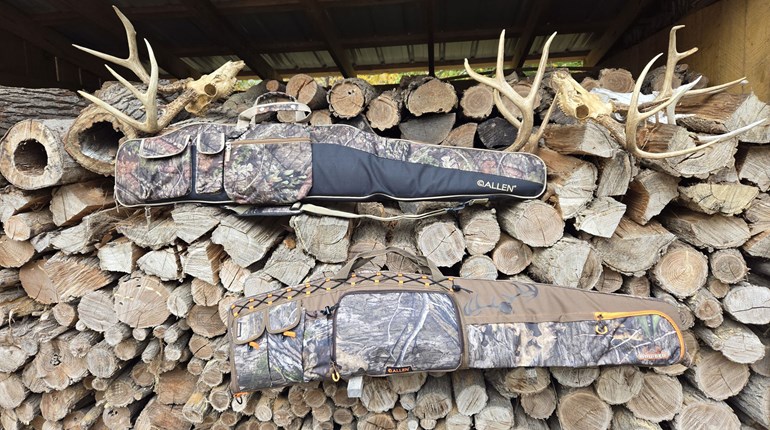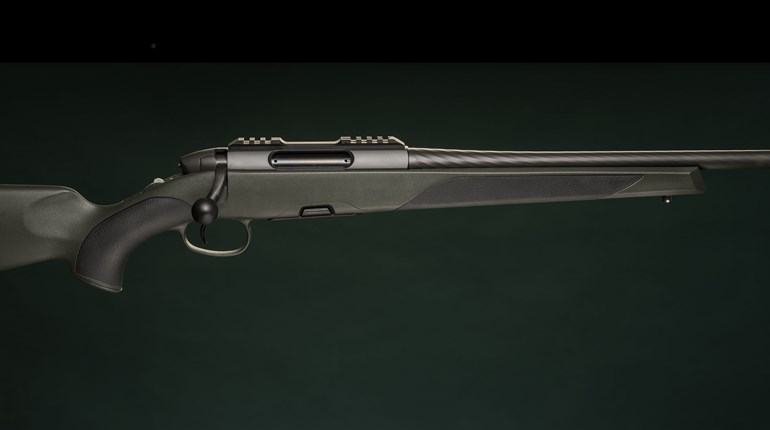
Browning needs no introduction to America’s 1st Freedom readers. It is hard to find a shooter of any stripe who doesn’t have a good Browning story—just one of ours, for instance, recollects a well-shot Citori over-and-under that wasn’t even our own. Many others acquired their Browning affinity through a firearm that Browning, as Browning, never manufactured in any numbers, despite a 100-plus year heritage: the 1911 Government Model.
John M. Browning’s masterpiece can fairly be said to have bullied its way to stardom. The pistol was not merely of game-changing design, but also of power, as Browning wrapped it around another of his inventions—the .45 ACP cartridge. Volumes could be—and indeed have been—written in praise and explanation of this remarkable, effective and enduring combination.
The more than 44-oz. (loaded) 1911 filled the bill for most any conceivable holster-borne duties or defensive needs in the early part of the 20th century. But then, as now, there was a decided application for a more modestly scaled and calibered pistol.
A revamped Browning design (based on the Colt M1903 “Pocket Hammerless”) became the M1908, the first mature, successful .380 ACP handgun. In 42 years of manufacture, several hundred thousand were sold, and at least 20 other firearms from more than a dozen manufacturers have been chambered in the cartridge since.
All of this brings a question to mind, particularly since John Browning designed them both: What in the world kept (arguably) the best big handgun design and best small handgun cartridge apart for much of a century? It’s worth noting that it isn’t for want of trying. Several other manufacturers have done so, some with relative success. We suggest an instructor’s perspective is helpful in seeing the answer clearly.
The marvelous physical democracy of firearms is perhaps most obvious in that humans of virtually any stature can learn to use them wisely, well and safely. Even those with small hands or slight builds can become superbly capable with the .22 Long Rifle. Many, having mastered sight picture, trigger press, stance and breathing, then cheerfully punch neat little group after neat little group, and all is well—right up until they try to step up to centerfire calibers.
Theory implies that truly correct technique will transfer. But long, sad experience and simple physics disagree: A distressing number of these shooters never fully recover their rimfire/light recoil proficiency. They are sabotaged by snappy-recoiling, smallish, blowback .380s, or larger calibers beyond the limits of their grip size and still-developing hand/wrist strength. Downloaded ammunition can help, but the majority who must rely on factory ammunition are stuck. The upshot is as plain as it is unpleasant: What boils down to bad ergonomic luck is still a crummy way to lose an enthusiastic new shooter.In every test we conducted, on paper, on steel (plates to 35 yards), and through defensive and competitive drills, the Black Label performed flawlessly.
This is precisely where the Black Label .380 ACP excels so dramatically—as a transitional pistol. The 85-percent scaling caters to those with smaller hands and less grip strength. The locked breach spreads recoil dissipation out over time in a way blowback pistols can’t. (Note that this improves reliability, too. Blowbacks are often unintentionally robbed of energy they need to cycle in the hands of modest-statured shooters. This tight “energy budget” is also why downloaded ammunition is rarely helpful.)
By no means do the advantages end there. The Black Label boasts a 5 3/8-in. sight radius—a dimension likely to be much closer to those of that introductory .22 Long Rifle. Therefore, problems with sight alignment never appear as they often do with shorter .380s. The longer sight radius also bespeaks added barrel length and weight, creating the slight nose heaviness that tames recoil and speeds sight/target realignment. The grip is full-length (not girth), yet even largish hands will find comfortable room for the “pinky” finger.
We recently put more than 600 rounds through the Black Label, using tests we employ on both full-sized and carry-class pistols. As such, we weren’t performing examinations only of accuracy and function, but also of performance in likely shooting tasks. In every test we conducted, on paper, on steel (plates to 35 yards), and through defensive and competitive drills, the Black Label performed flawlessly.
In the end, we conclude that Browning made a long chain of correct choices in the design of the Black Label .380. We also believe it’s hard to overstate the implications of the “transitional” label we’ve assigned, though it bears a final clarification: Experienced shooters and instructors know that almost anyone can be taught to safely, effectively handle modern handguns up through at least .45 ACP caliber, and the Black Label is very nearly perfect for getting folks over the rimfire-to-centerfire hump.
But between the lines is another well-earned “goodness” that shouldn’t be ignored: The newest scion of “The House That John Browning Built” is plenty good enough to stand on its own.
Nuts And Bolts
“The Right .380,” as Browning calls the Black Label, is a delight to the hand and eye, but even an experienced 1911 fan would be seriously mistaken to think Browning engineers had merely scaled the specs and loaded raw materials into a CNC machine.
So while the Black Label looks and functions in splendidly authentic fashion, it actually embodies quite a bit of new “tech.” Most noticeable—to us, at any rate—is the weight. Even with a steel slide and barrel, the empty pistol weighs only slightly more than a pound, thanks mainly to a “composite” frame.
Unlike many .380s, the Black Label is true to the locked-breach, tilting barrel design of the 1911, and this accounts in large measure for the lighter, smoother recoil and considerably faster recovery from shot to shot (though the 5.5-lb. alloy trigger doesn’t hurt either). Some aficionados would rightly point out that the barrel/breach locking mechanics are actually different, and they’d be right. To which we reply, “So what?” The results are what impressed us.
There are other extras on this diminutive cousin too, the most obvious of which is an ambidextrous thumb safety. Fully functional for both left- and right-handed shooters, it allows for true cocked-and-locked or “Condition One” carry—just as John Browning intended.
Speaking of carry, the modern .380 ACP isn’t to be lightly dismissed for defensive purposes, especially in a firearm as thin as the Black Label. Width is the most crucial dimension in comfortable carry, period. While we’re fans of larger calibers too, we accept as settled wisdom that any caliber you’ll actually carry is better than another left at home in the safe. We also expect a surprising number of Black Labels will end up in this role—even if they weren’t acquired with this in mind.
We do have a small gripe, which we’d be remiss not to mention. We don’t hold with magazine disconnects, and the Browning has one. That is, with the magazine removed, the hammer won’t fall, even with all safeties disengaged. We know all the arguments for this—we think—but just don’t buy them. But would that keep us from the Browning? The answer is absolutely, emphatically not!




































